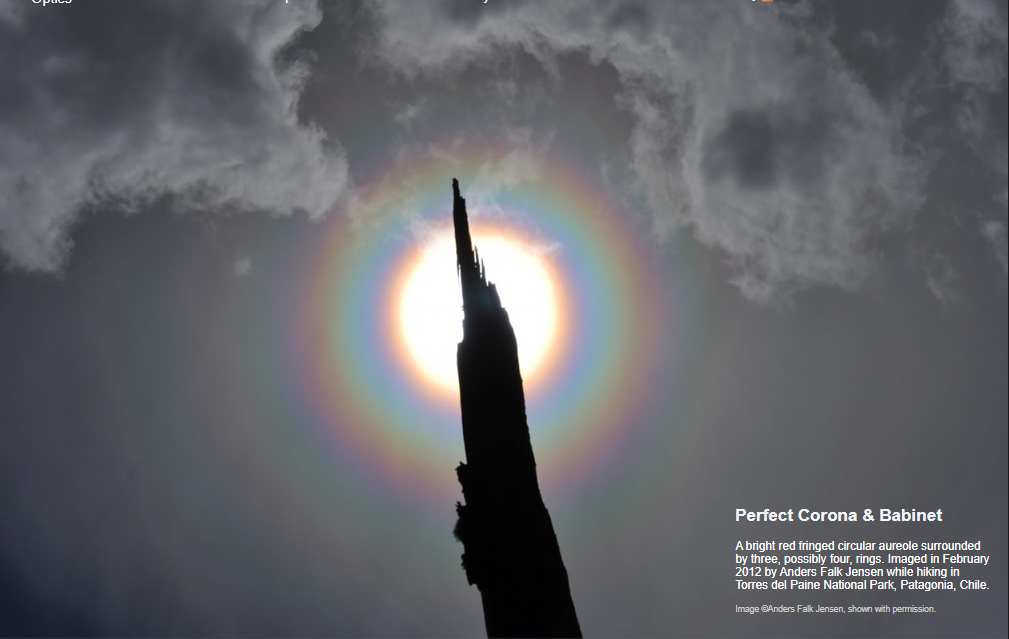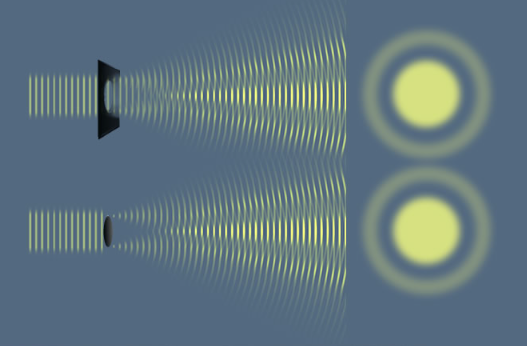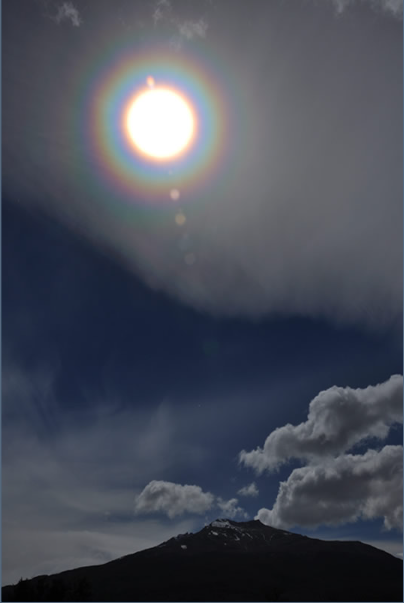OPOD - Babinet & Coronae
OPOD - Babinet & Coronae: A Closer Look at Atmospheric Optics
Atmospheric optics is a fascinating field that explores the various optical phenomena that occur in the Earth's atmosphere. One such phenomenon is the formation of coronae, which are beautiful rings of light surrounding a central source. In this article, we will delve deeper into the concept of coronae and discuss the intriguing connection between Babinet's Principle and telescopes.
The Enchanting Beauty of Coronae
Coronae are captivating optical phenomena that can be observed in certain atmospheric conditions. They appear as a series of concentric colored rings around a bright light source, such as the Sun or the Moon. These rings are caused by the diffraction and interference of light as it passes through tiny droplets or ice crystals suspended in the air.
Understanding Babinet's Principle
Babinet's Principle is an optics principle that states that the diffraction pattern produced by an obstruction or mask is the same as that from its complement. In the case of coronae, this complement can be visualized as an opaque sheet with a circular aperture. The diffraction pattern produced by this configuration is equivalent to what is observed when looking through a telescope aperture at a star.
Telescopes, Stars, and Miniature Coronae
When observing a star through a telescope under high magnification and steady atmospheric conditions, the star appears as a small disk surrounded by 2-3 diffraction rings. This resembles a miniature corona, with the telescope aperture acting as the scattering object. Babinet's Principle allows us to draw parallels between the diffraction patterns observed in both coronae and telescope apertures.
The Far Field and Fraunhofer Diffraction
Babinet's Principle holds true for diffraction patterns observed in the far field, also known as Fraunhofer diffraction. The far field refers to the region far away from the scattering object where the diffraction pattern can be accurately approximated. In the context of coronae and telescopes, this means that the diffraction patterns observed are most accurate when the observer is situated at a considerable distance from the scattering object.
Exploring the Images
The images accompanying this article provide captivating visual representations of coronae and their connection to Babinet's Principle. The first image, captured by Anders Falk Jensen in Torres del Paine National Park, Patagonia, Chile, showcases a perfect corona with a bright red fringed circular aureole surrounded by three, possibly four, rings. The second image illustrates the concept of a miniature corona surrounding a star observed through a telescope aperture.
Conclusion
Atmospheric optics never fails to amaze us with its intricate and mesmerizing phenomena. Coronae, with their concentric rings of colored light, offer a glimpse into the intricate diffraction and interference patterns created by tiny droplets or ice crystals in the atmosphere. Babinet's Principle further enriches our understanding by revealing the similarities between these celestial displays and the diffraction patterns observed in telescope apertures. So next time you find yourself gazing at the sky, take a moment to appreciate the wonders of atmospheric optics and the beauty it unveils.

Perfect Corona & Babinet
A bright red fringed circular aureole surrounded by three, possibly four, rings. Imaged in February 2012 by Anders Falk Jensen while hiking in Torres del Paine National Park, Patagonia, Chile.
Image ©Anders Falk Jensen, shown with permission.

Coronae, Telescopes & Stars:
A corona is formed by tiny droplets in cloud or mist individually diffracting sunlight.
The light is scattered mainly at a droplet's surface and to a good approximation this can be thought of as an opaque disk rather than a sphere.
There is an optics principle, Babinet's Principle, that the diffraction pattern from an obstruction or mask is the same as that from its complement - in this case an opaque sheet with a circular aperture.
The latter configuration happens to be equivalent to a telescope aperture. A star seen under high magnification and steady atmospheric seeing is a small disk surrounded by 2-3 diffraction rings. A miniature corona where the scattering object is the telescope aperture.
Babinet's Principle is exact for diffraction patterns far from the scattering object, the far field or Fraunhofer diffraction, as here.

Note: this article has been automatically converted from the old site and may not appear as intended. You can find the original article here.
Reference Atmospheric Optics
If you use any of the definitions, information, or data presented on Atmospheric Optics, please copy the link or reference below to properly credit us as the reference source. Thank you!
-
<a href="https://atoptics.co.uk/blog/opod-babinet-coronae/">OPOD - Babinet & Coronae</a>
-
"OPOD - Babinet & Coronae". Atmospheric Optics. Accessed on April 24, 2024. https://atoptics.co.uk/blog/opod-babinet-coronae/.
-
"OPOD - Babinet & Coronae". Atmospheric Optics, https://atoptics.co.uk/blog/opod-babinet-coronae/. Accessed 24 April, 2024
-
OPOD - Babinet & Coronae. Atmospheric Optics. Retrieved from https://atoptics.co.uk/blog/opod-babinet-coronae/.